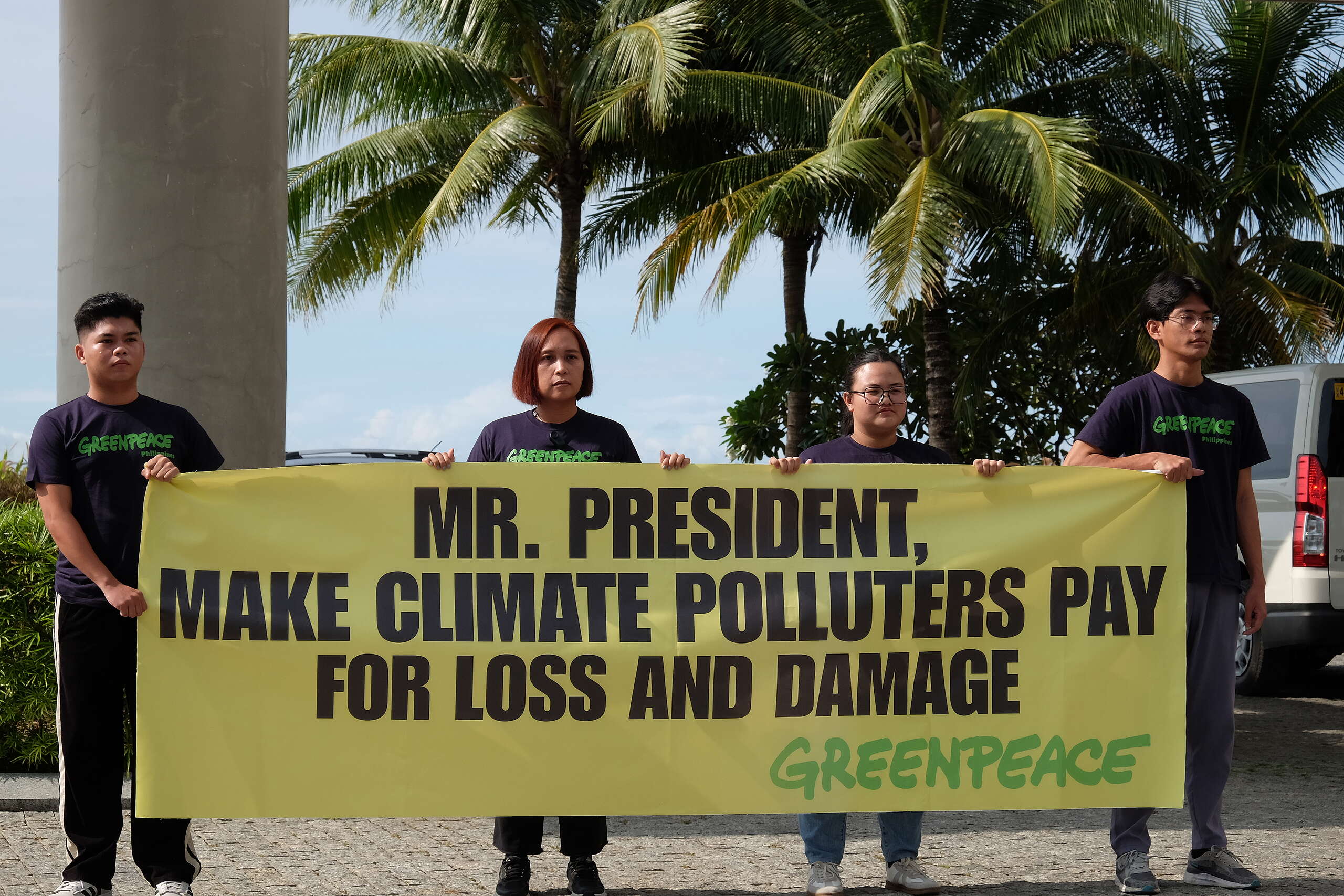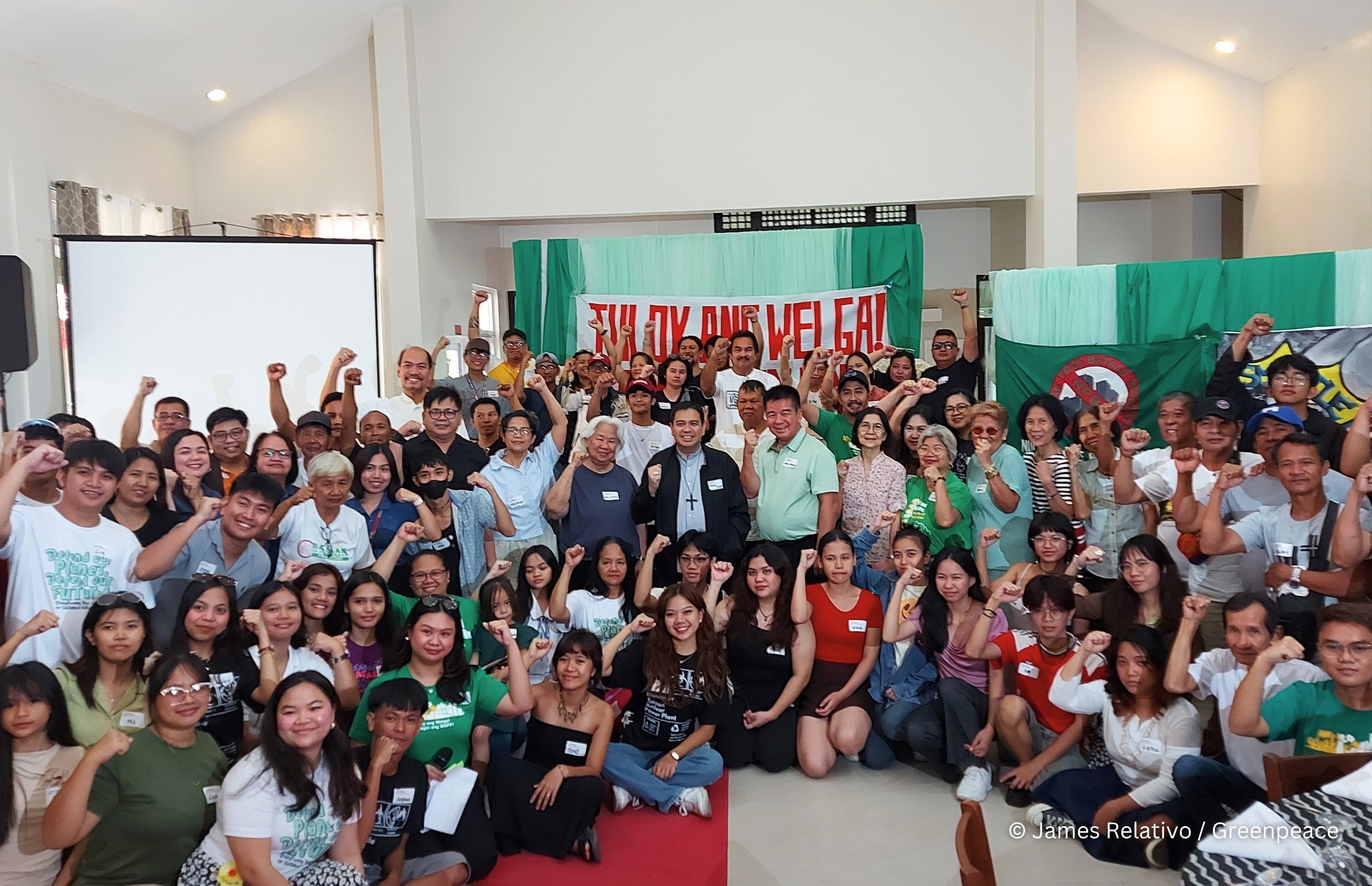QUEZON CITY (24 March 2022)—The Philippine weather bureau’s recent typhoon reclassification confirms that destructive supertyphoons are no longer aberrations, but are the new normal as the country faces the climate crisis, Greenpeace said today in a statement. The group asserts that, given this reality, climate justice needs to be front and center of the policy agenda of the next administration.
Greenpeace said that based on the new definition issued by PAGASA, the Philippines experienced 7.5 times more super typhoons from 2016-2021 than previously recorded. PAGASA changed the classification of supertyphoons from cyclones that exhibit maximum sustained winds of at least 220 kilometers per hour to 185 kilometers per hour. Based on the old definition, the Philippines encountered only 2 supertyphoons from 2016 to 2021. With the new definition, 14 of the 39 typhoons that passed the country in the last six years can be classified as super typhoons.[1]
“It’s official: the Philippines is a supertyphoon hotspot. Out of the average 20 typhoons we experience every year, as much as 6 of these can be supertyphoons,” said Greenpeace campaigner Virginia Llorin. “And yet, this is just the tip of the iceberg. Science is telling us that we need to prepare for worse scenarios ahead. And without meaningful and urgent climate action, we need to prepare for the worst.”
According to the latest report from the Intergovernmental Panel on Climate Change (IPCC) released earlier this month, climate risks are appearing faster and will get worse sooner than previously assessed, and that they have been disproportionately affecting people in highly vulnerable geographies.
Impacts on communities that are least responsible for the climate crisis, and least able to cope, are also more severe. In the Philippines, the climate crisis has been costing Filipino communities their lives and livelihoods for decades, and according to data from the government, damages from climate impacts has cost the country around PHP 506 billion in the past 10 years.[2]
Greenpeace says that climate will be the defining issue of the next administration. The next president will serve during the decade which is the most crucial window for climate action if we are to avoid the worst impacts of the climate crisis.
“Filipinos are already suffering from climate impacts and it will get worse,” said Llorin. “The climate crisis impacts very fundamental issues: food, water and energy security, poverty, injustice, health, migration, security and our fundamental rights to life, health, among others. To secure all these and ensure Filipinos are able to live decent lives free from fear or want, means that climate needs to be the primary lens in government policymaking and implementation.”
“Six supertyphoons a year is now our new normal–this is not the time for any government, or for those aspiring for the highest office, to be sitting back and thinking that climate isn’t a priority issue. We need systemic changes and justice. The solution is not one-off actions, but bold, visionary, transformative policies that will secure the safety and well-being of Filipinos for decades to come,” said Llorin.
Notes to editors
NOTES TO EDITORS
What should the next administration do when it comes to climate justice?
- Climate action and climate justice must be mainstreamed across all local and national government policies and programs (for example in city planning, infrastructure projects, permits for large-scale industrial activities, and fisheries and agricultural policies, among others)
- Plans for economic recovery from the impacts of the pandemic must build in climate action (i.e. a green and just recovery plan)
- Coherent strategies beyond disaster response must be put in place, and these should also address long term vulnerabilities, not just disasters
- Hold fossil fuel companies accountable for the climate crisis and call on other countries to do the same. It must also lead the call for a global phase out of fossil fuels toward a just transition to renewable energy.
- Call on rich countries for more ambitious emissions reductions targets, more money for climate finance, and compensation for loss and damage.
- Ensure the Climate Emergency Declaration is followed through with a coherent climate plan. The government must institute climate action as the central policy of the state, and must protect people and climate on the basis of climate justice. Climate action must also be at the heart of the country’s COVID recovery plan.
[1] https://seacm.pagasa.dost.gov.ph/tracks
| Year | No. of TYs & STYs (Original Number) | No. of STYsunder new classification | TYs reclassified as STYs |
| 2021 | 5 TY, 0 STY | 3 STY | Bising, Kiko, Odette |
| 2020 | 6 TY, 1 STY | 1 STY | Kristine (Ulysses still not considered STY) |
| 2019 | 8 TY, 0 STY | 1 STY | Hanna (Tisoy & Ursula still not considered STY) |
| 2018 | 8 TY, 0 STY | 6 STY | Maria, Maymay, Ompong, Paeng, Queenie, Rosita |
| 2017 | 4 TY, 0 STY | 0 STY | |
| 2016 | 8 TY, 1 STY | 3 STY | Butchoy, Ferdie, Nina |
[2] https://www.pna.gov.ph/articles/1158484
Media contact
Katrina Eusebio-Santillan
Digital Campaigner, Greenpeace Southeast Asia – Philippines
+639992296451


![[Blog] WHEN THE TIDE BECOMES THE TEACHER](https://www.greenpeace.org/static/planet4-philippines-stateless/2025/06/95c8411e-9a04f785-4293-46a6-a6cf-425f0a384682.jpg)
